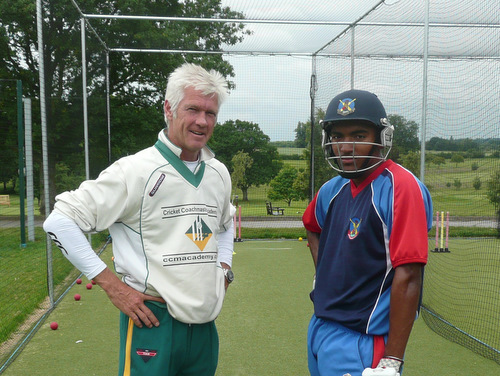|
 You have probably never heard of Terryn Fray. You have probably never heard of Terryn Fray.
But those who have call him a rare talent with a sparkling future before him. At 18 he captained Bermuda Under-19's and has made his debut for the full Bermuda team in both one day and first-class cricket.
Why is Terryn so good?
Some might say he was blessed with talents he was born with. His genes aligned to make him better at hitting a cricket ball than everyone else.
A natural.
It's a common sense explanation, but there is a problem.
Despite looking for over 150 years, nobody has ever been able to prove the existence of talent.
Take the example from the book "Talent is Overrated". Researchers looked for musical talent. Like sporting ability, we all know some people are better than others musically. The idea was to find out if any particular type of person was more likely to have this talent, so they interviewed hundreds of youngsters of different ability.
There were no signs of natural talent.
The best kids were roughly the same on every measure of early development. Between birth and about 8 years old you could not put a sheet of paper between the differences in musical ability.
And it's the same with cricket.
I once was lucky enough to have lunch with the coach who has taken several current England internationals through their school days. One of his comments that stood out about these players is that none of them looked good enough to play for England.
Yes, they were solid school cricketers, all first team level, but he never saw signs of outstanding talent.
In other words, if genetic talent does exist, it does a very good job of hiding itself. At best, it has a much smaller influence than common sense assumes.
So if it's not innate, what is it?
Why Terryn is so good and you are not
During the English summer Terryn Fray visited the UK from his home in Bermuda.
He wasn't on holiday. He was here to work.
He knew that like any skill, the only way to get better is to practice hard.
It's how the best musicians in the study became the best, and it's how all the best cricketers become the best.
So Terryn jetted around the world for a week of intense coaching with Gary Palmer.
Gary worked on Terryn's technique with drills designed specifically to improve his performance. The drills were repeated until perfection was achieved with Gary's constant feedback.
It was hard work and not much fun.
And it worked.
Both Gary and Terryn's father reported to me how much he has improved technically in a short time.
But it doesn't end there.
With Terryn winning a place at Cardiff University he can continue this deliberate practice under the elite MCCU conditions.
And that's why Terryn is destined to succeed.
He practices harder and longer than anyone else. He does it until he gets it right.
It's a lesson anyone with serious cricket ambitions should heed. It's the only way that works.
Discuss this article with other subscribers
|

.jpg)




.jpg)


